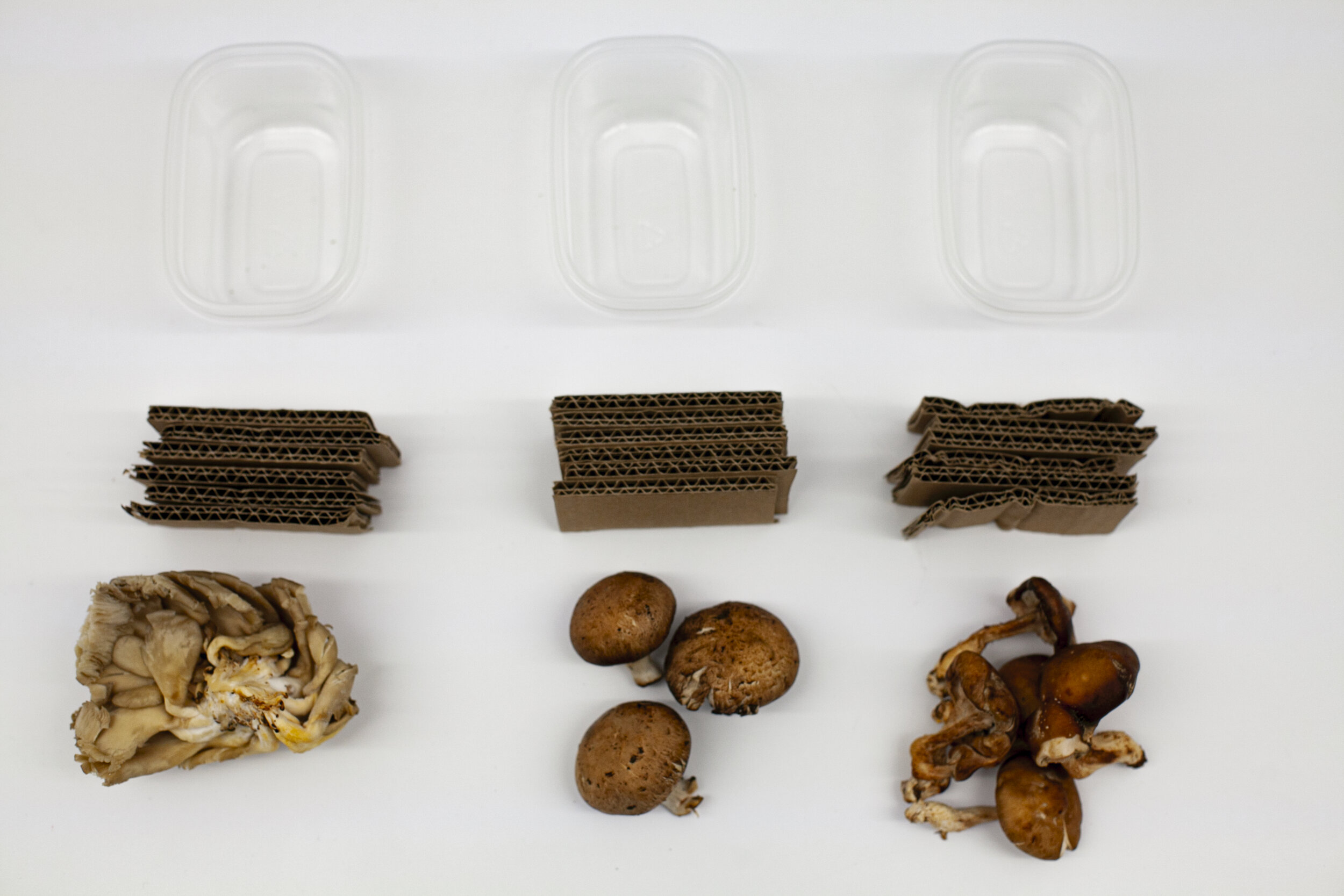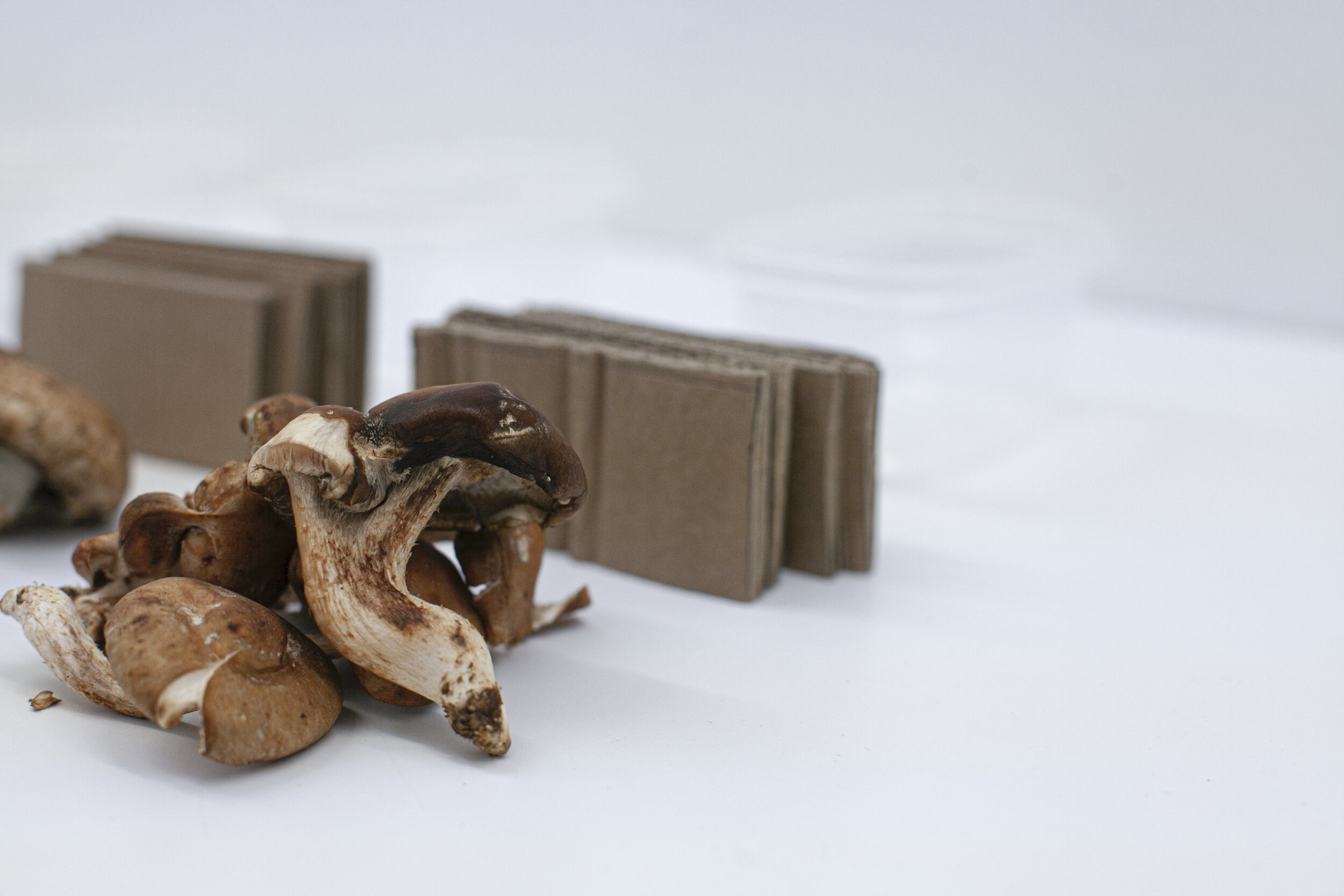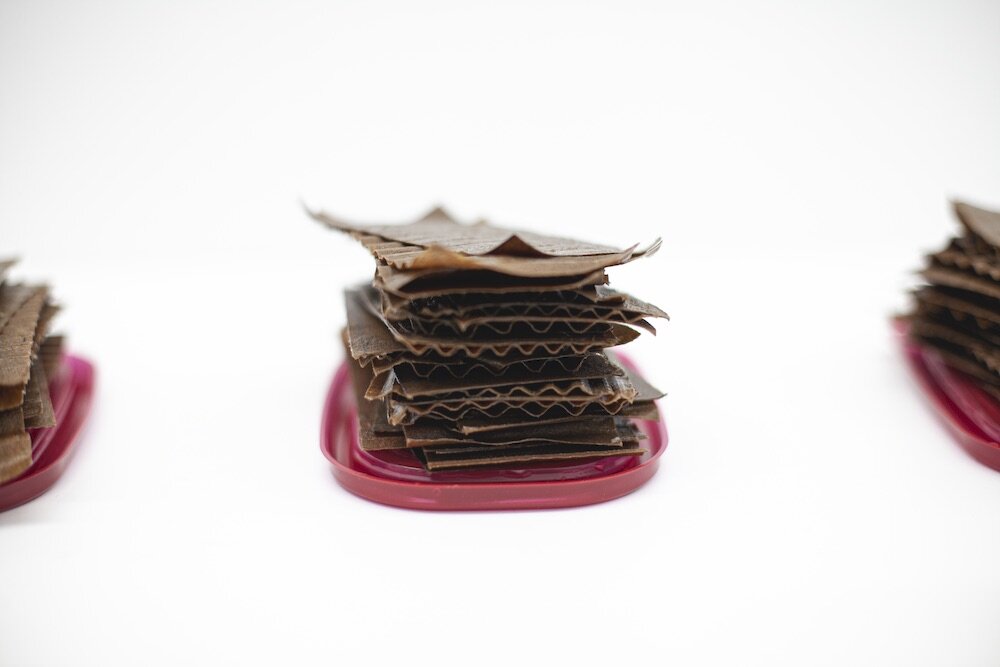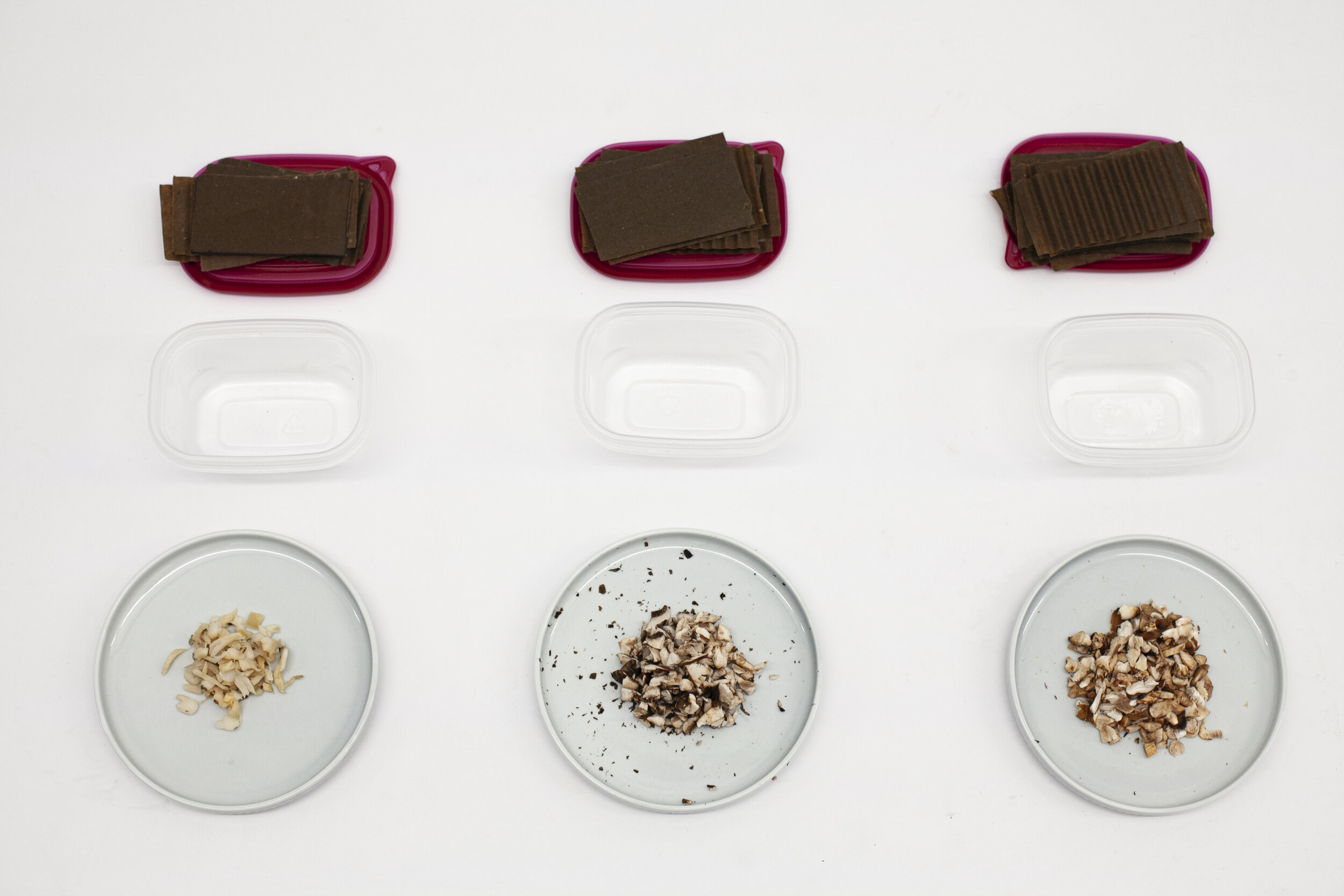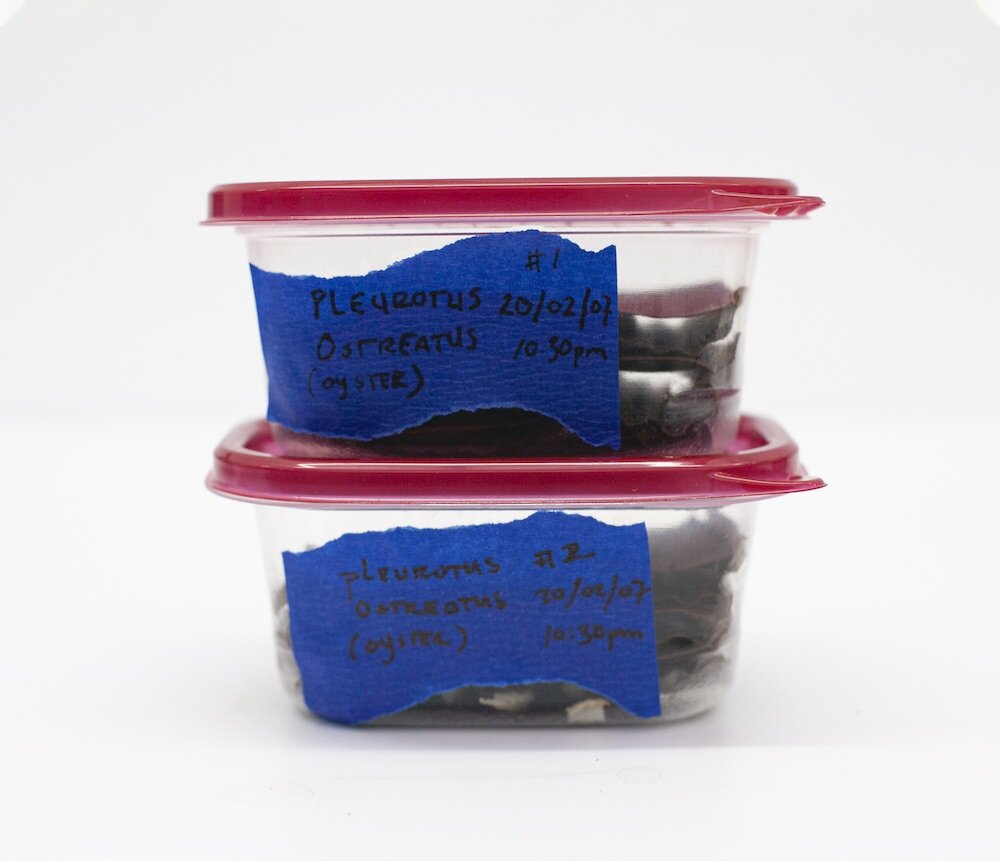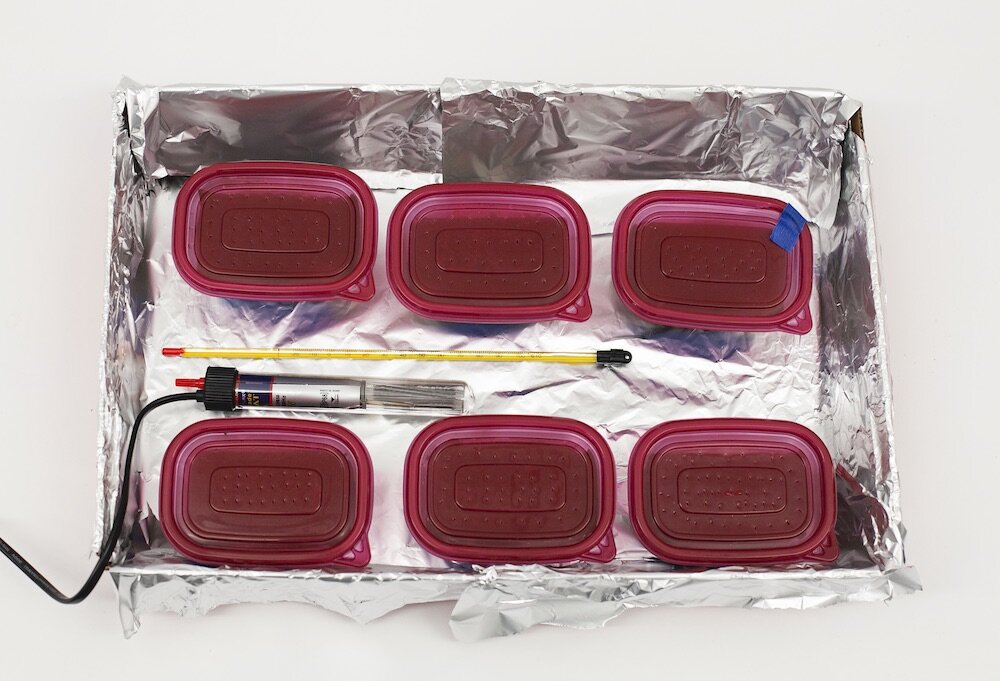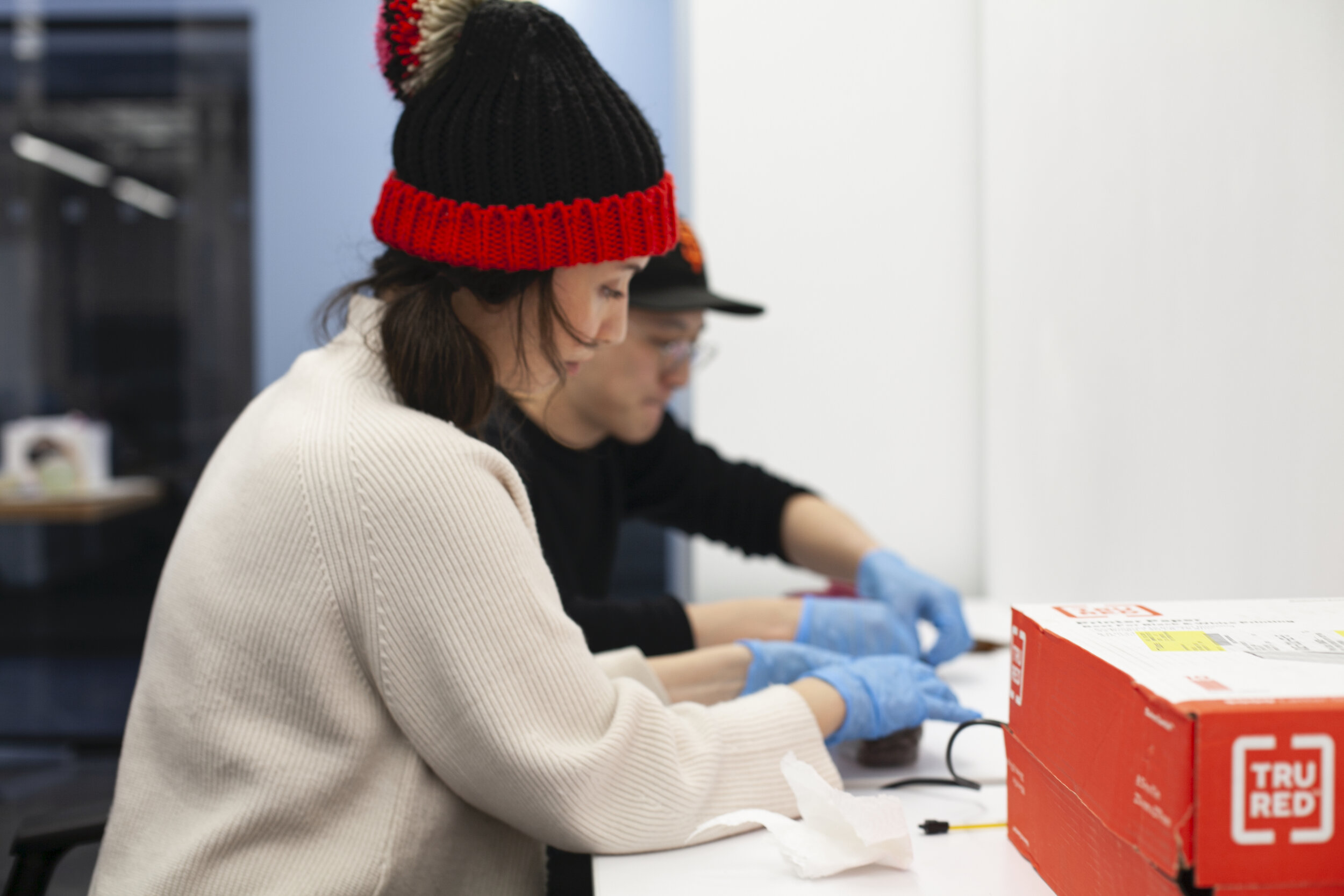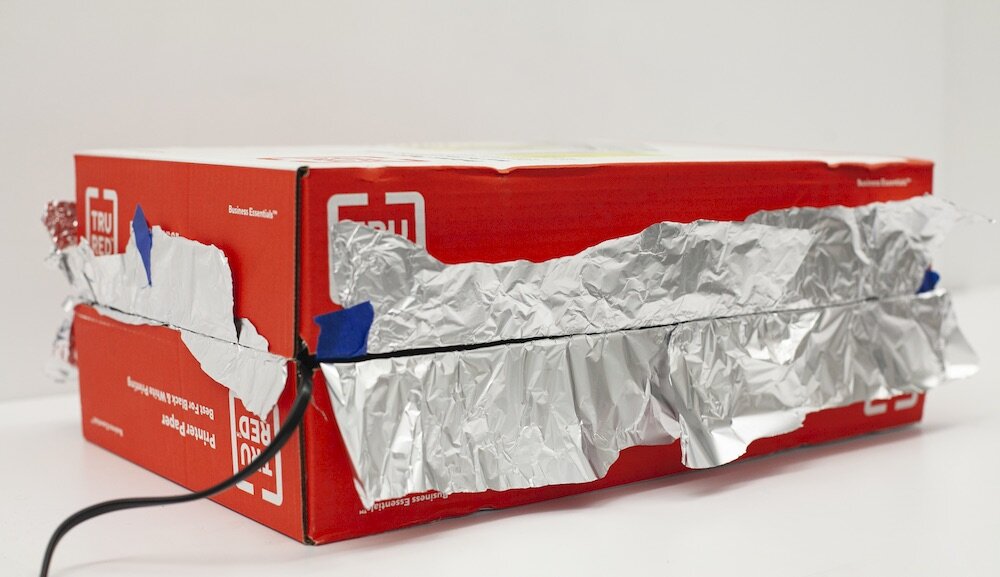W3: Microscopic Worlds
Mycelium
The Shapeshifting Empress
Location: IDM MicroLab
Type of Samples:
A piece of mycelium grown from a small piece of fungus (Oyster mushroom)shaved from cardboard
Swab of mixture: mycelium + fungus (Oyster mushroom) + water mixed
Method:
Swabbed mycelium : Didn’t yield good results
Used tweezers to detach mycelium from cardboard: Didn’t work. Mycelium is delicate (almost cotton candy like texture) and difficult to extract from the surface it’s grown on
Mixed pieces of fungi with mycelium and mixed them with water. Then swabbed a sample from mixture: Broken and scattered pieces of mycelium and cardboard were seen under the microscope
Took a small piece of fungus with mycelium grown around its tissue. This gave the best result.
We used the microscope in IDM microlab and observed the sample under different magnification and brightness levels.
Interpretation:
The last sample allowed us to see the web of mycelium grown on a small piece of fungus. The 3D structure of this web was fascinating to see under the microscope, since mycelium looks flat and gossamer. We used a flashlight to add light from different directions, which resulted in some angelic looking mycelium pictures. How could this not be the hero in our microscopic world?
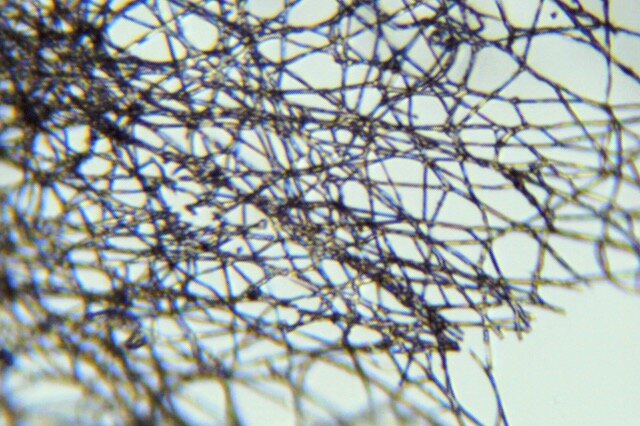
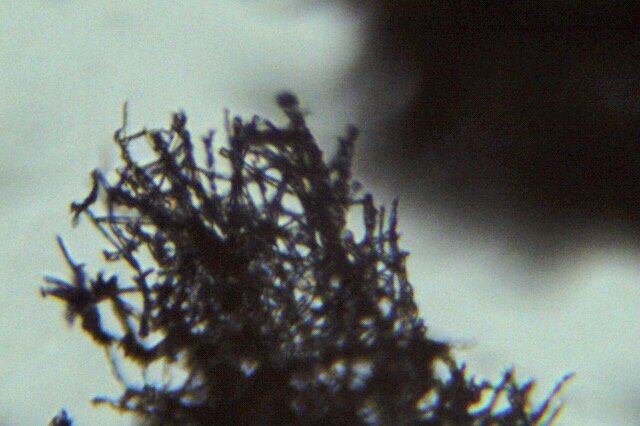
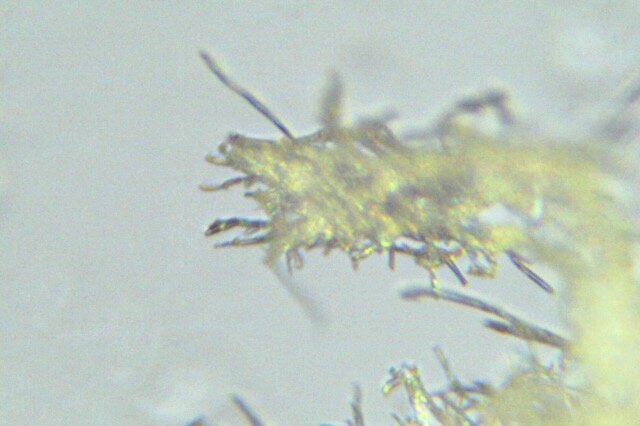
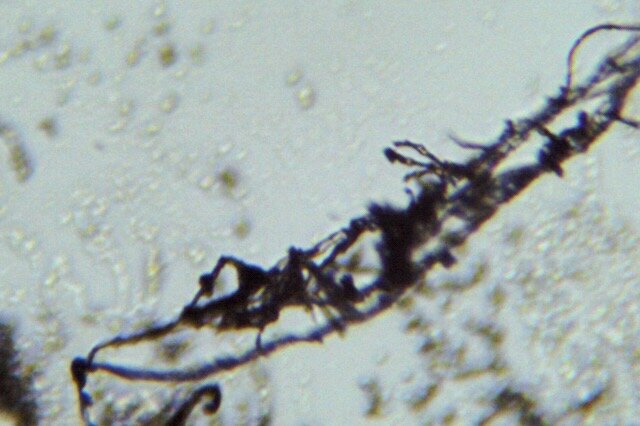
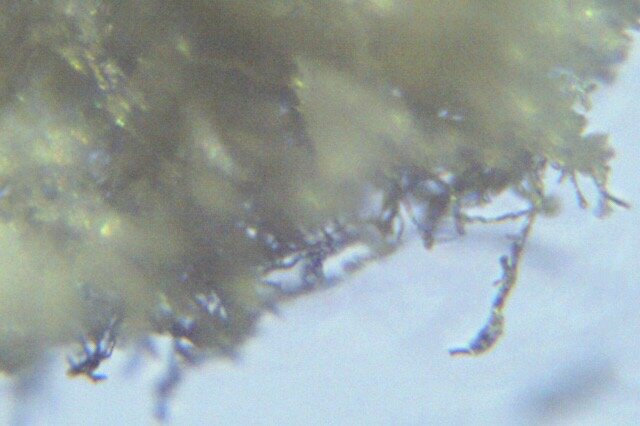
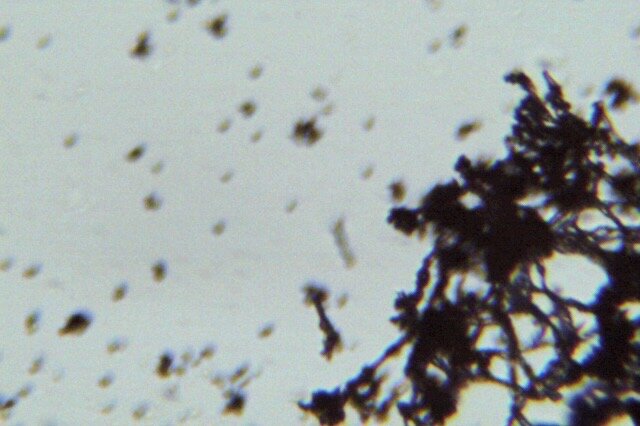
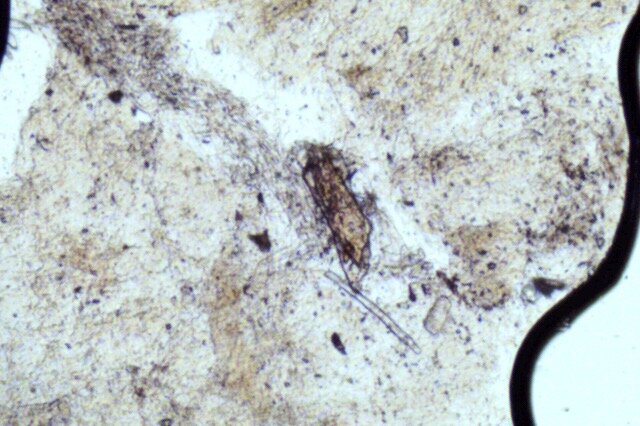
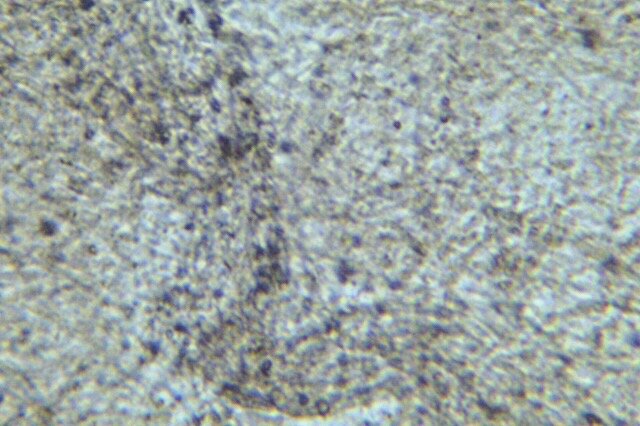
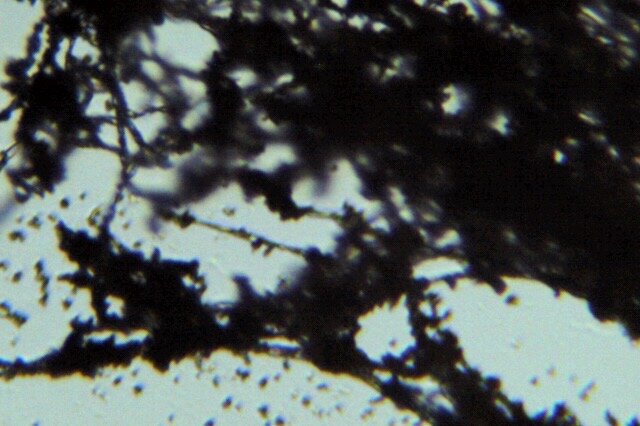
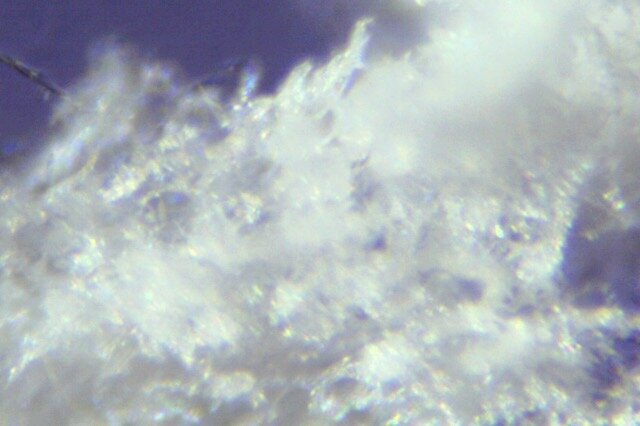
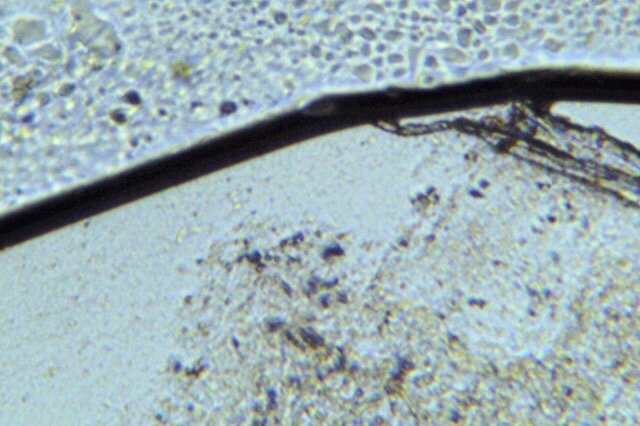
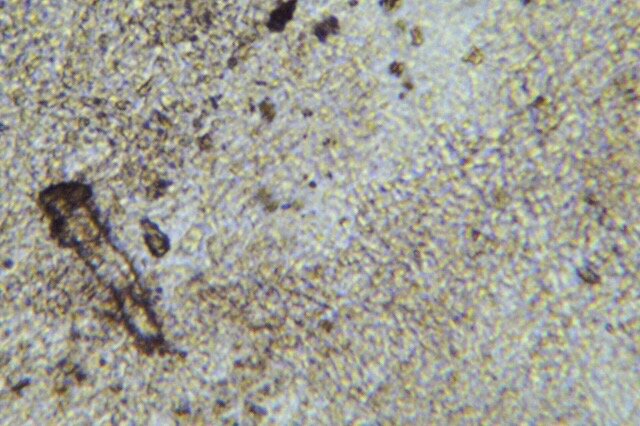
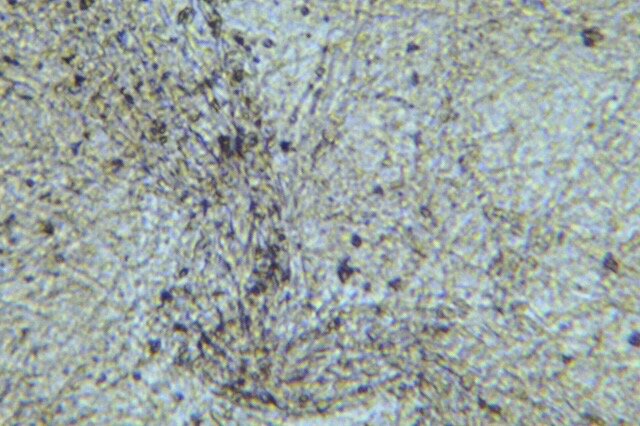
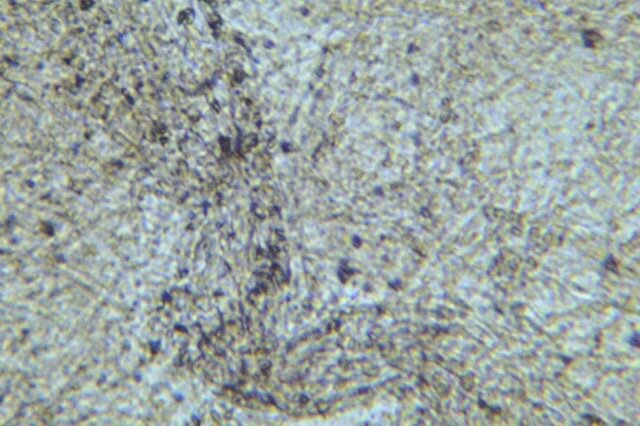
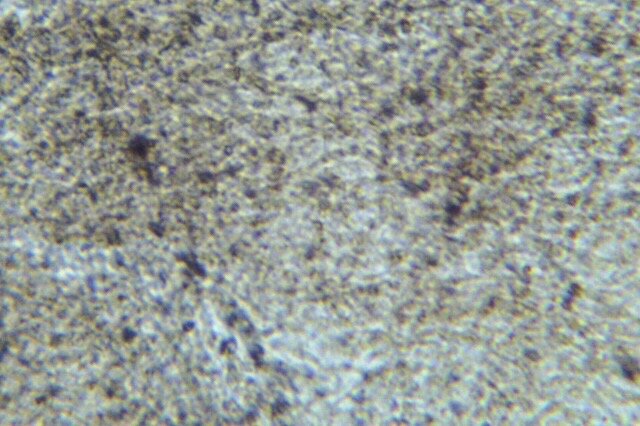
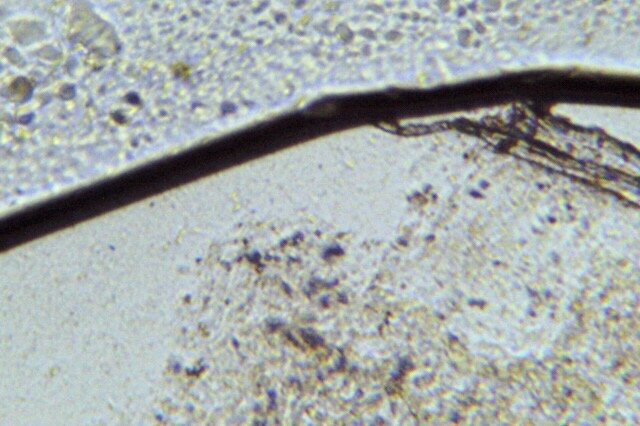
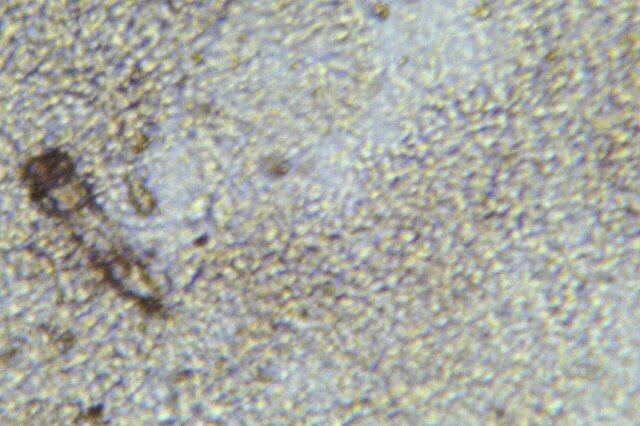
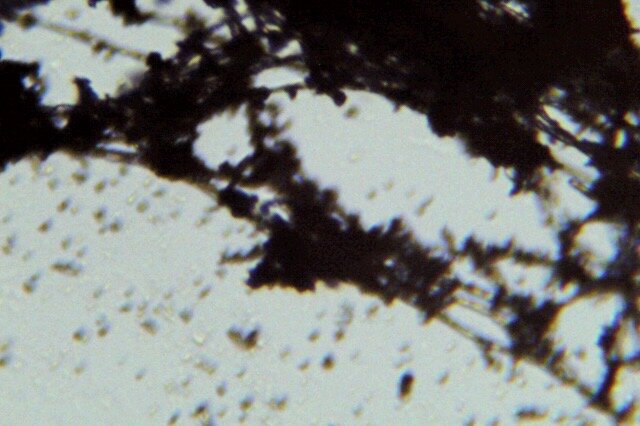

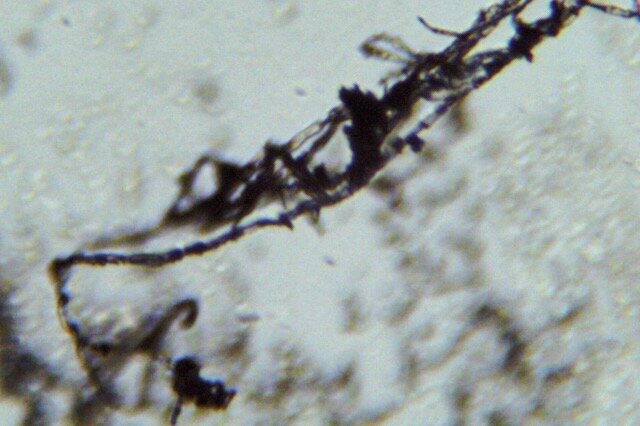
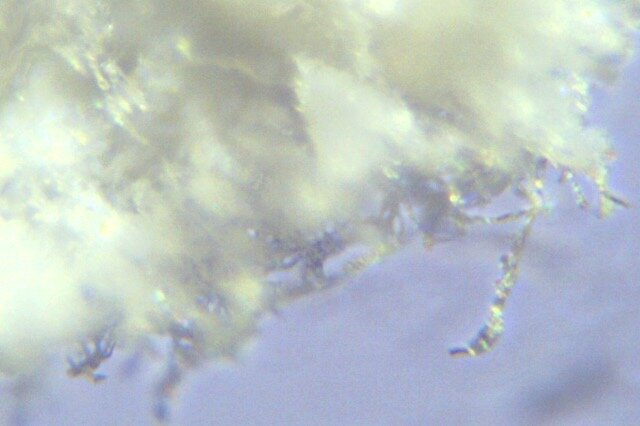

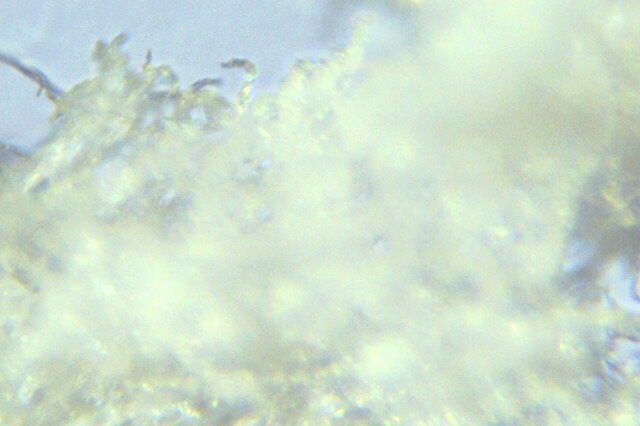
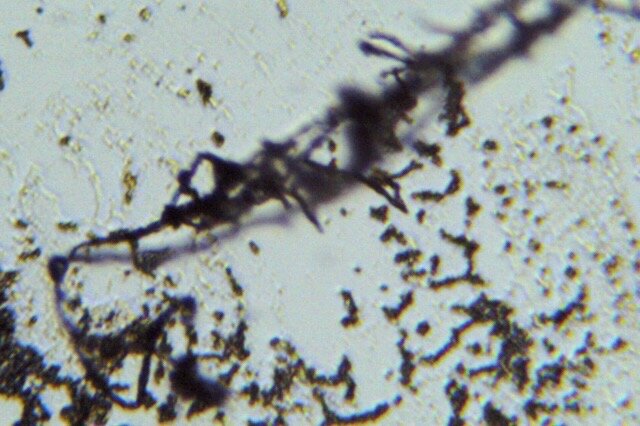
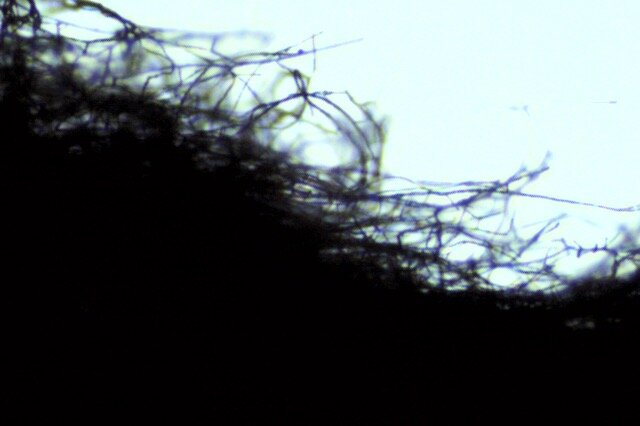

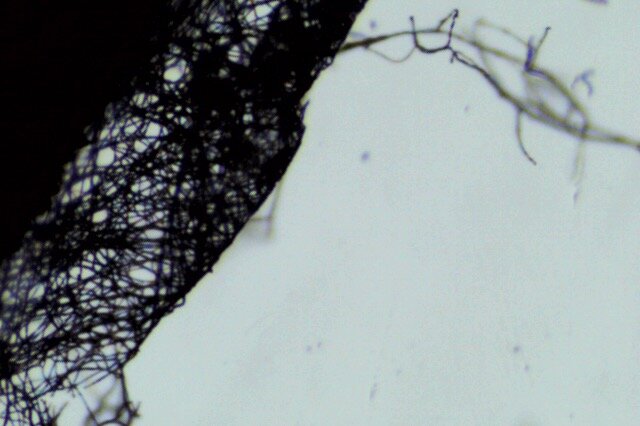
Act I: The Golden Empire
Mycelium ruled over the Golden Empire. She was poised, complex and delicate. She fashioned herself in fine and multidimensional white gowns that grew wider and more complex as she grew. In her quiet elegance hid the type of strength that could only be seen over time. It was resilience. After all, she was the hero who saved the Golden Empire and brought abundance to her land. She was admired by all for her nurturing nature. Everyone knew of her poise and power, but only a few knew how such a delicate being could be so mighty. Those few had seen her magic, in the dark foggy nights when she shape-shifted into a majestic golden dragon, spreading her gossamer web of wings over the land and nourishing it. But the empress had a dark secret; she wasn’t all powerful as everyone thought her to be. She feared the dark villain of death on his horse: Mold.
Mold
The Villain on a Horse
Location: IDM MicroLab
Type of Samples:
A swab of green mold grown on fungi and cardboard
Method:
Swabbed mold for 10 second and smeared on the slide
We used the microscope in IDM microlab and observed the sample under different magnification and brightness levels.
Interpretation:
Sure, green mold under microscope looks like newly discovered Jackson Pollock’s paintings, but to us the disorganized and organic structure looked dark and villain like. Especially, when we saw how it was taking over the mycelium. Or perhaps that’s how we perceived it, since it ruined two of our mycelium samples…
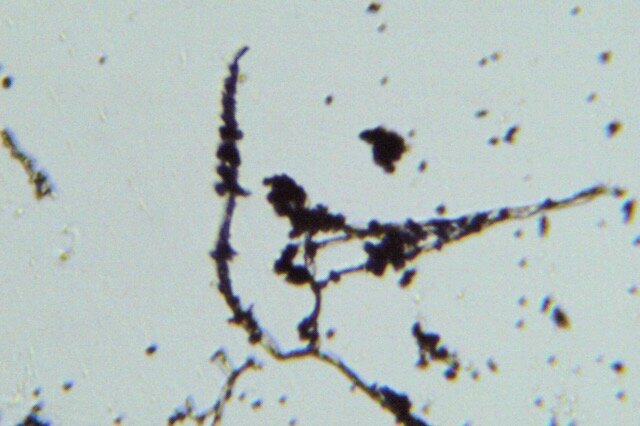
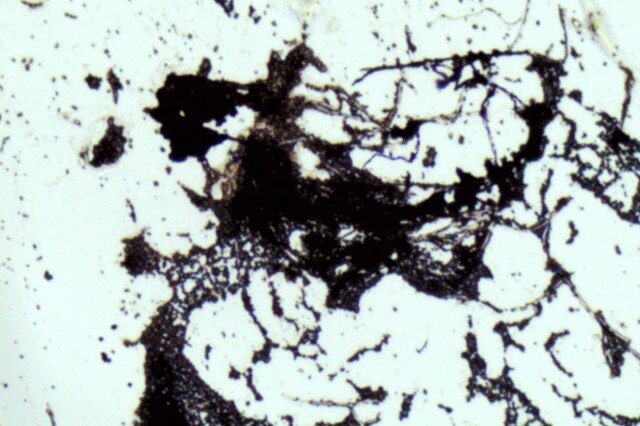

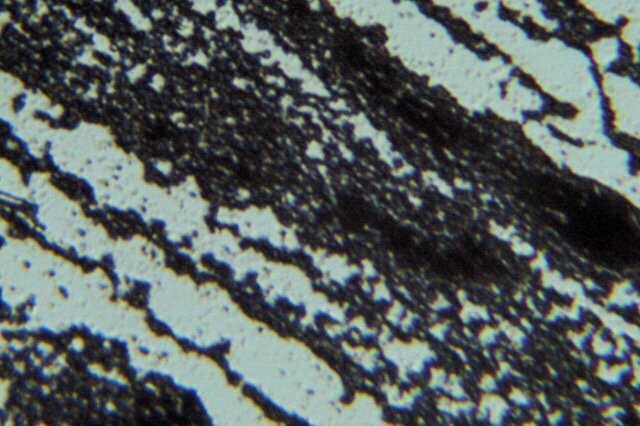
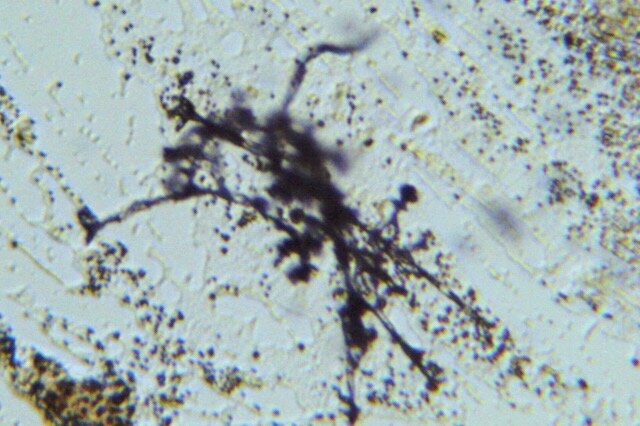
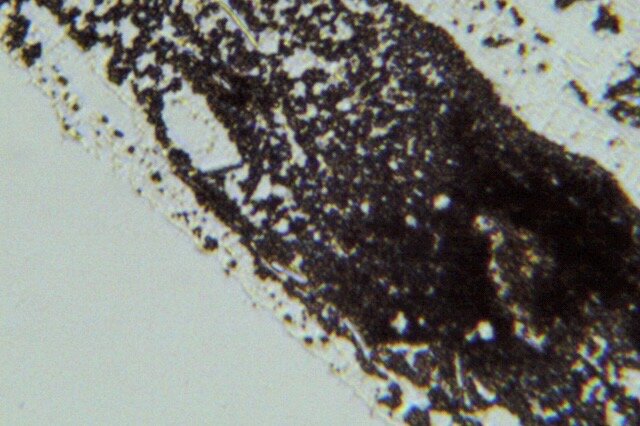
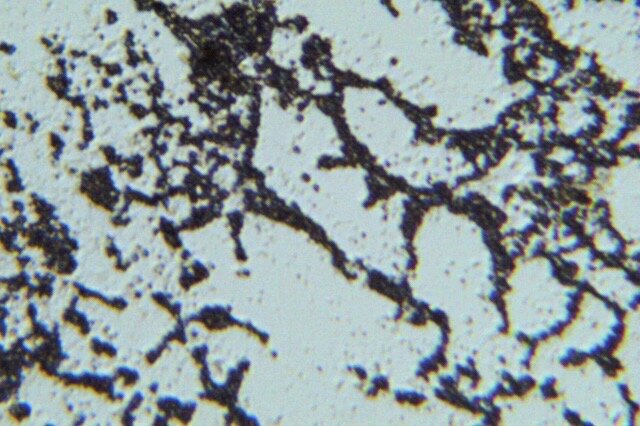
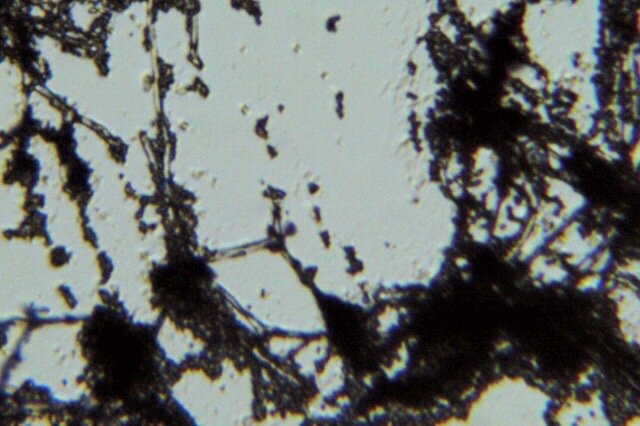
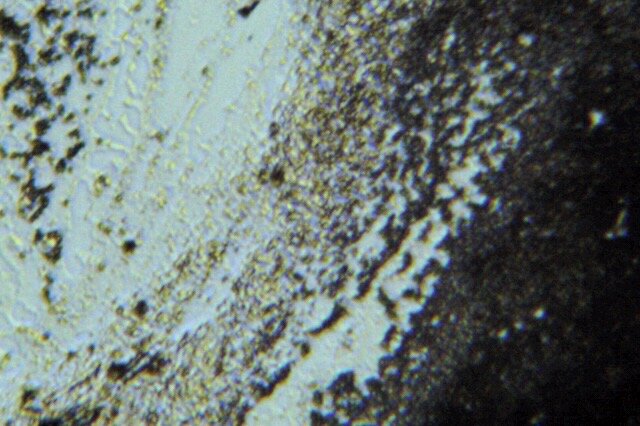
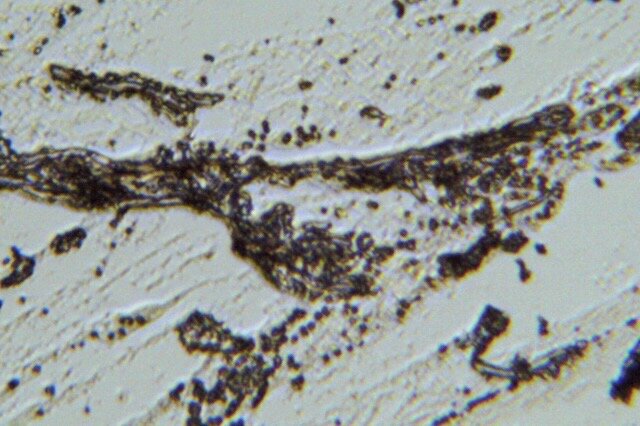
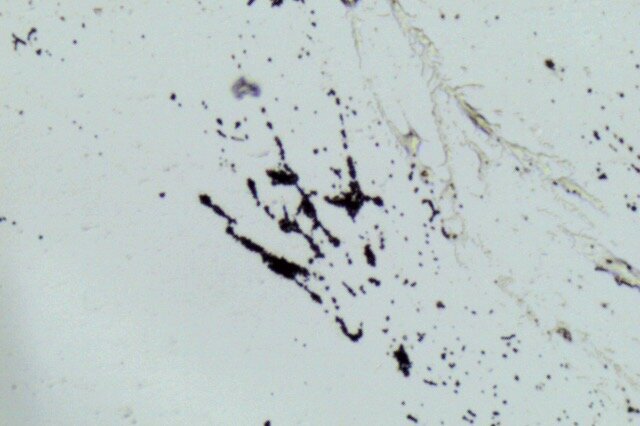
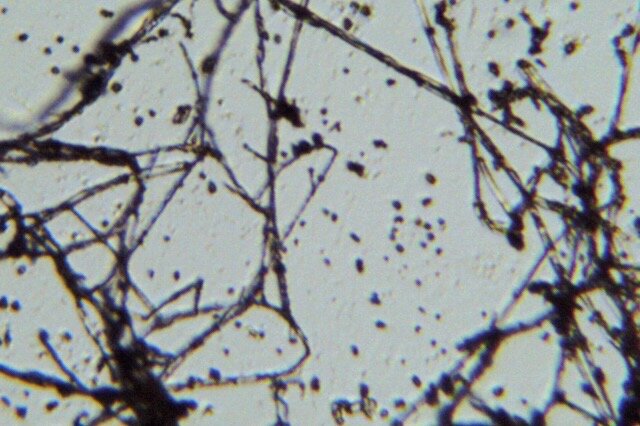

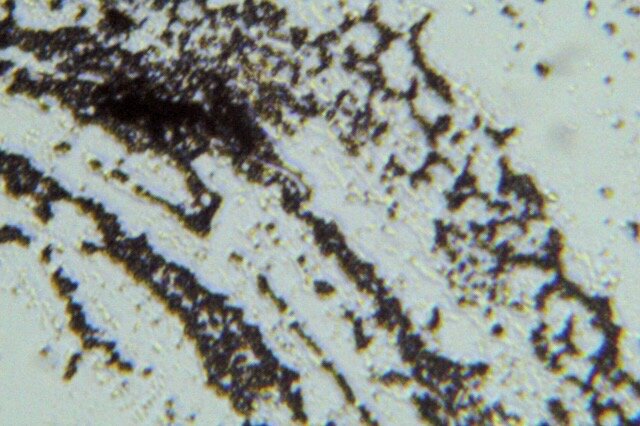

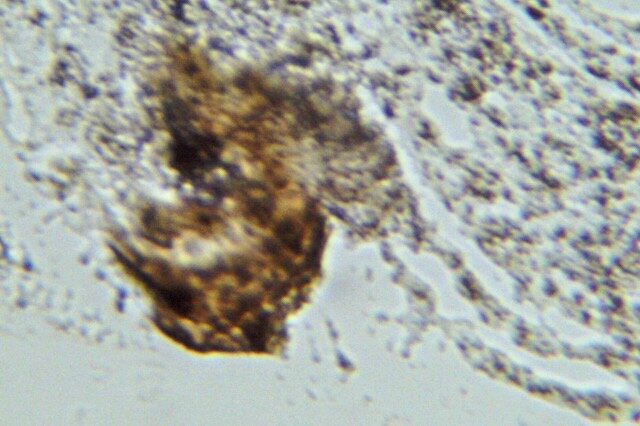
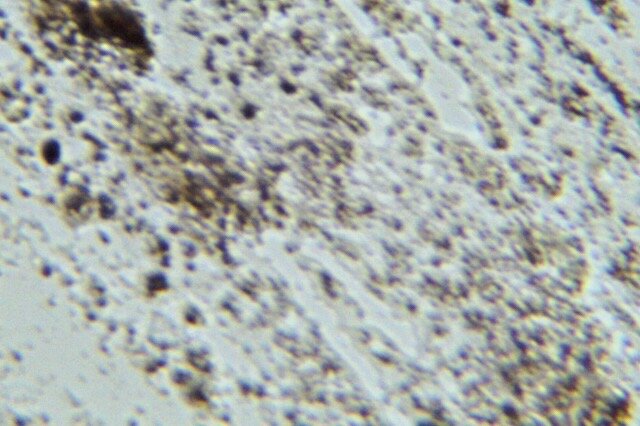
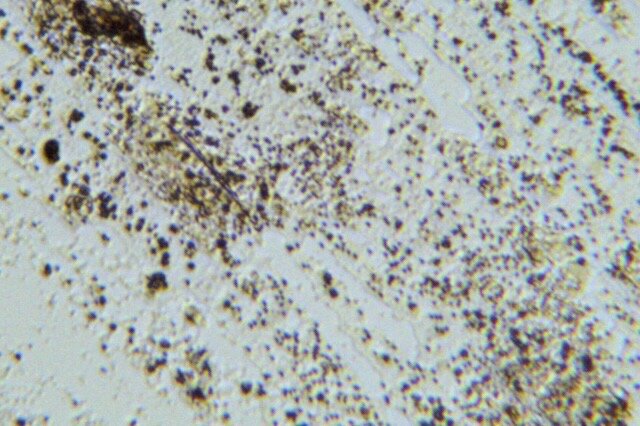
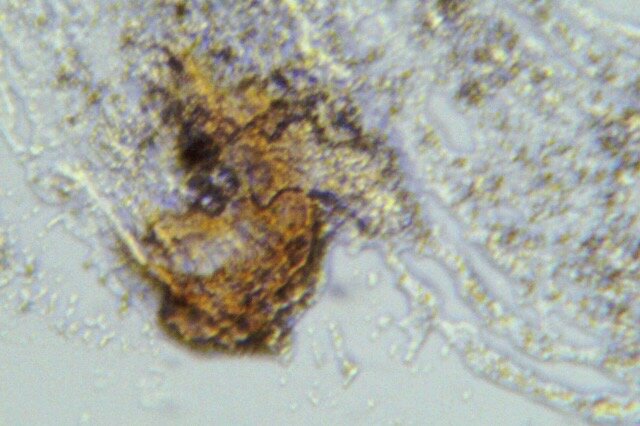
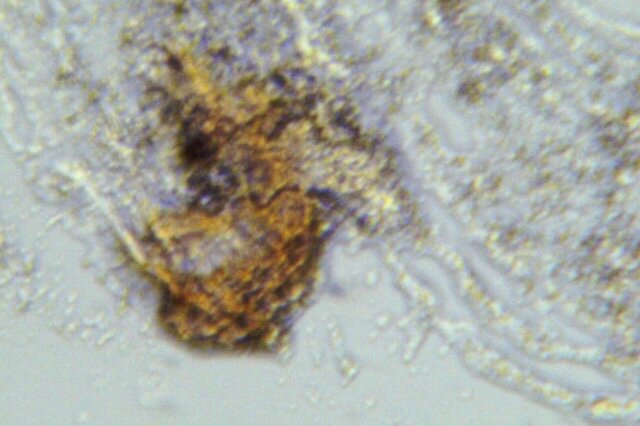
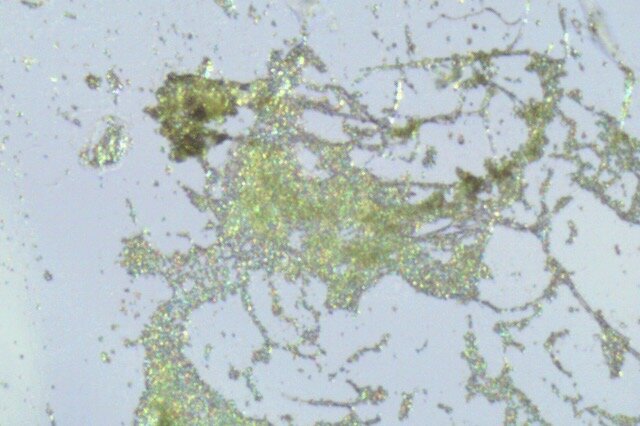
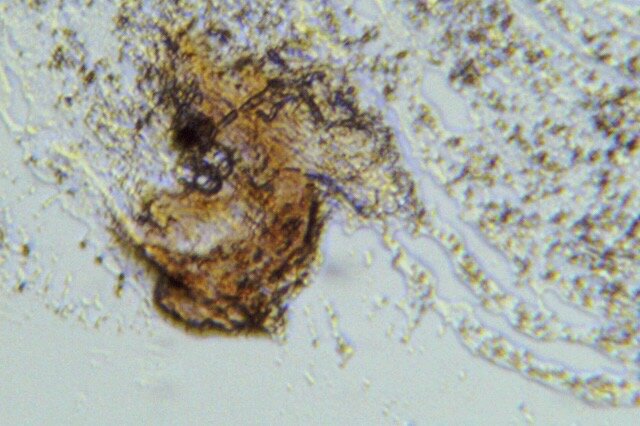
Act II: The Dark Dungeon of Death (DDD)
Not far from the Golden Empire, in the upside down, a dimension hidden to all in the Golden Empire, ruled the villain of death in a dark dungeon up on the mountains. He ruled alone, for he was violently enraged all the time. He kept it hidden under his dark hood, but he spread it anywhere he went: a dark smear of dark, death and depression. He had ruined many kingdoms, the kingdom of Shitake his latest conquest. He sucked the life out the entire kingdom, but he still couldn’t satisfy his hunger for death. His silent rage was loud as he planned his attack on the Golden Empire. He believed that killing the shapeshifting empress would purify him and turn him golden too. It was the only thing left that could finally bring him peace and salvation.
IDM Grow
The first settlers
Location: IDM Grow Lab, Hydroponic system
Type of Samples:
A swab of substrate + some soil + water that circulates the IDM Grow hydroponics system
Method:
Swabbed the substrate for 20 second and smeared on the slide
We used the microscope in IDM microlab and observed the sample under different magnification and brightness levels.
Interpretation:
It was difficult to find anything specific in this sample. It looked like a deserted island with a few plant cells scattered around; what looked like a broken piece of the plant’s root system and some unidentified objects/clusters. No sign of other organisms in this sample. SAD…
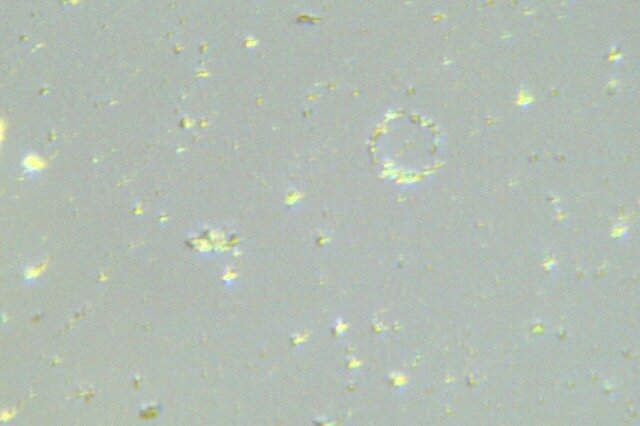
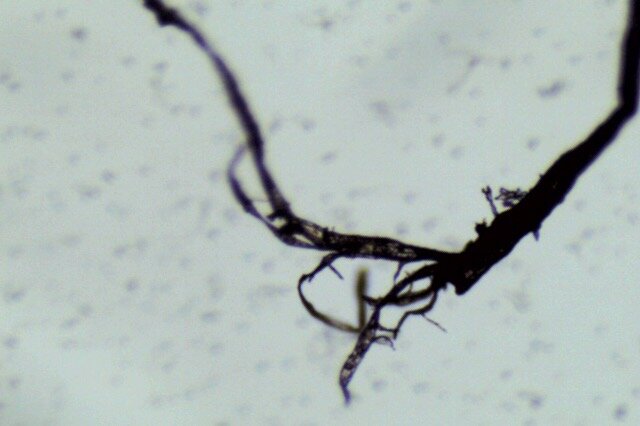
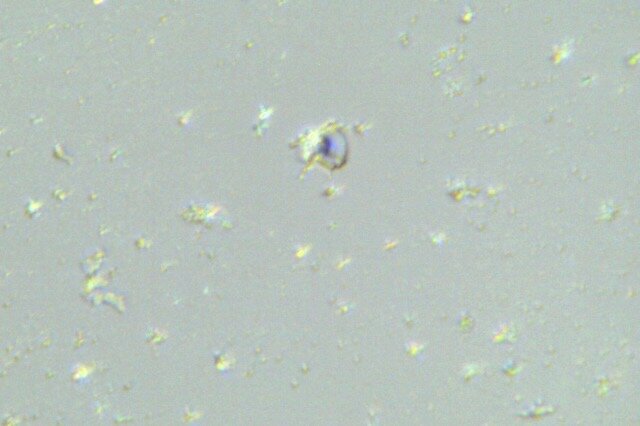
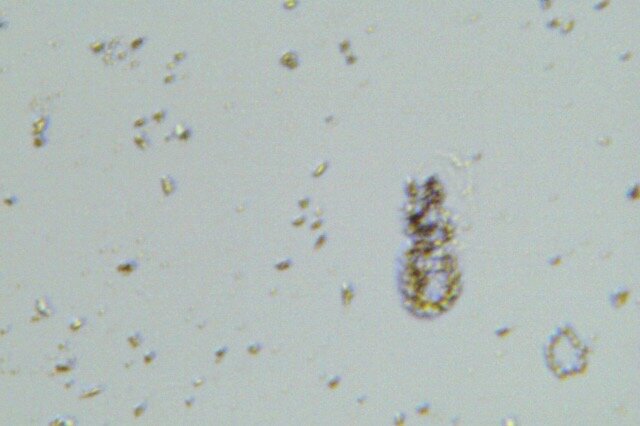
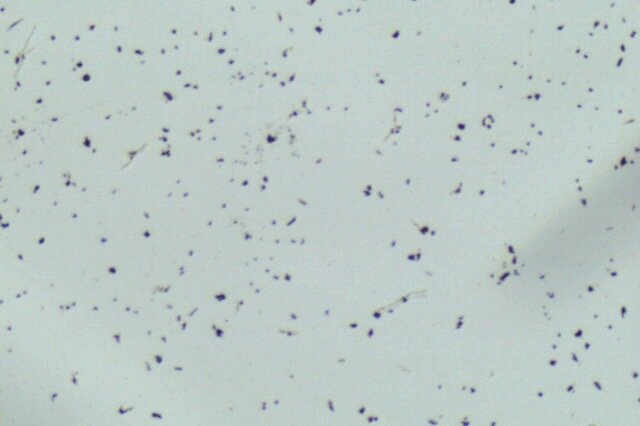
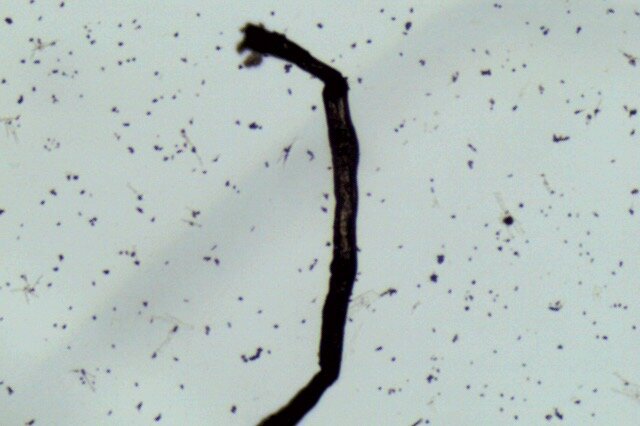
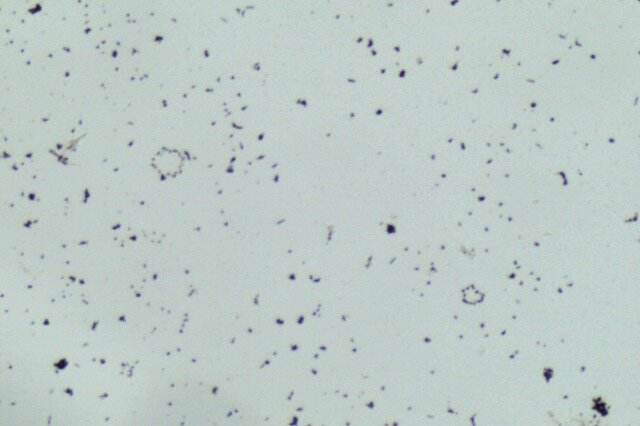
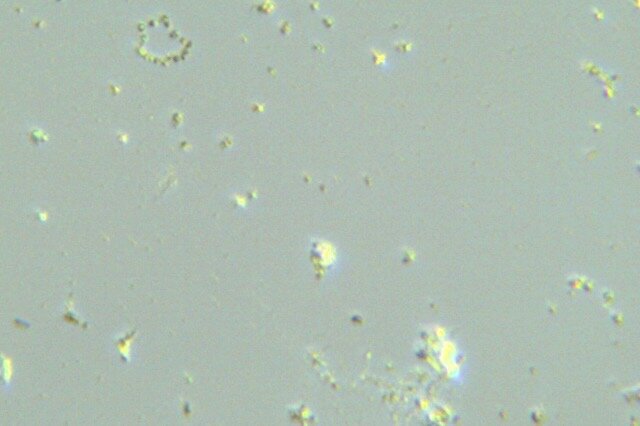
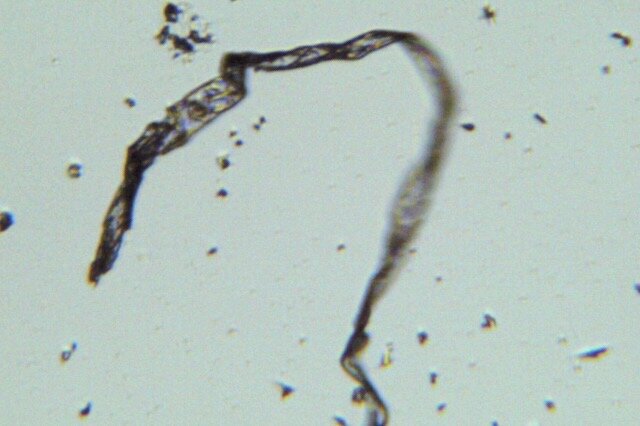
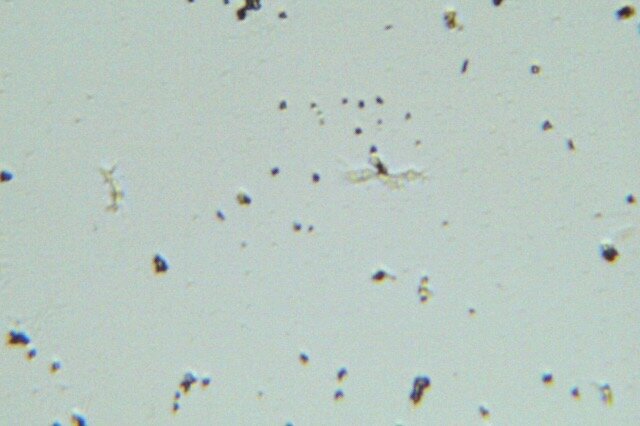

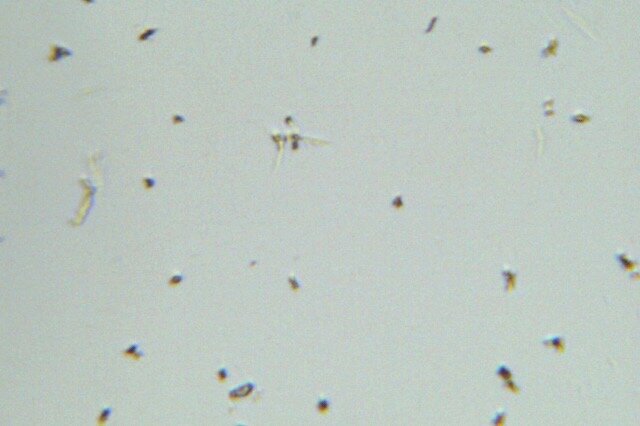
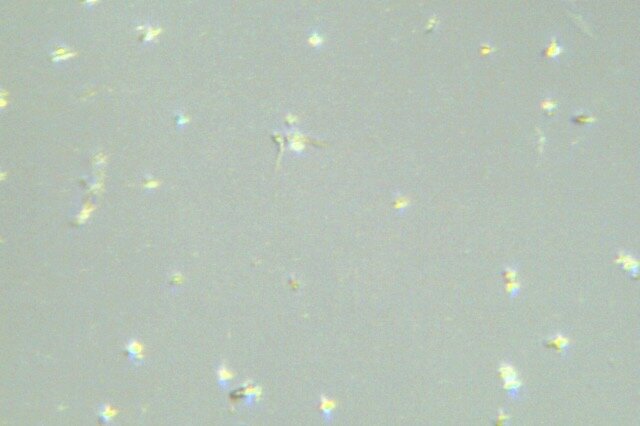
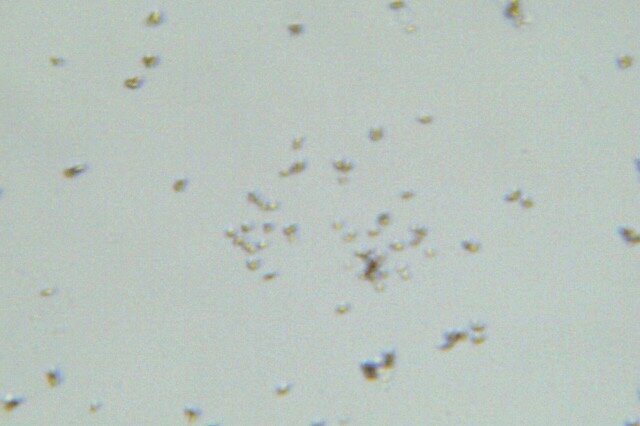
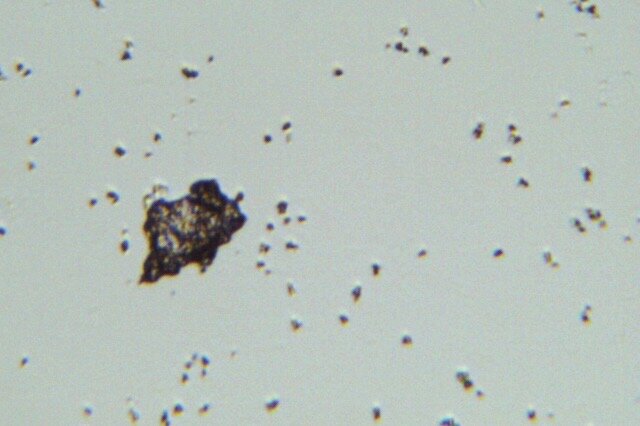
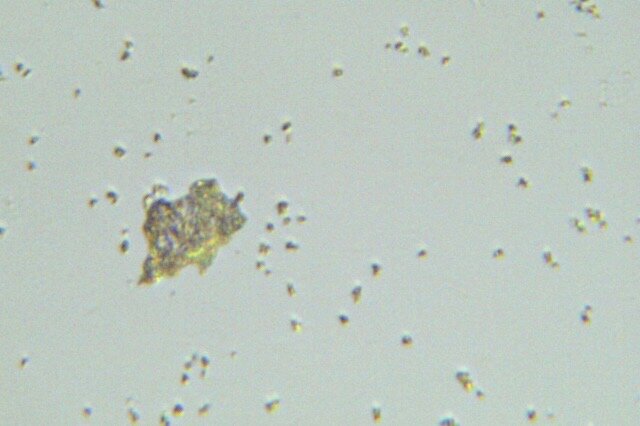
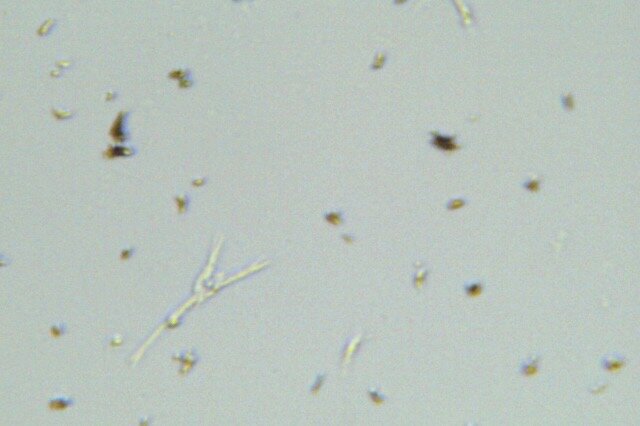
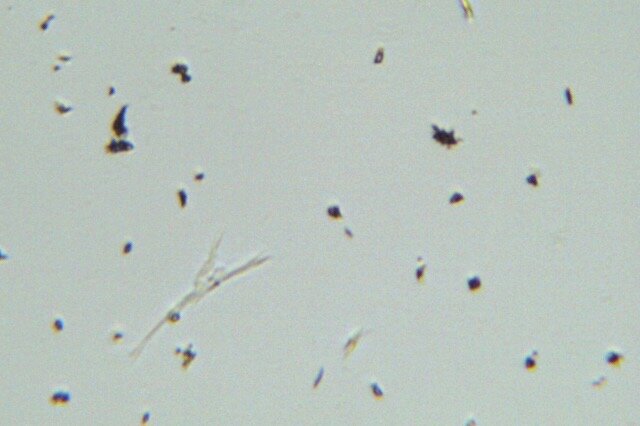
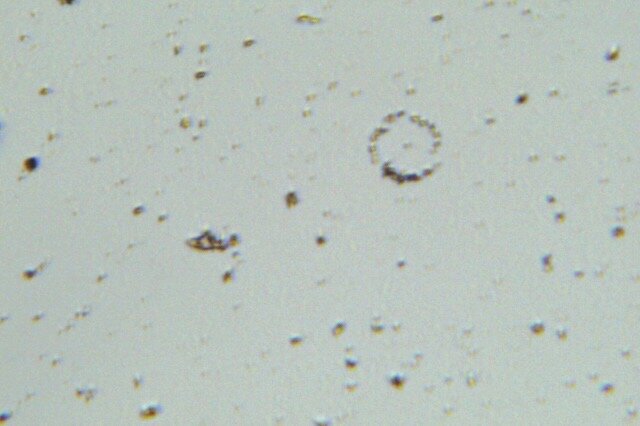
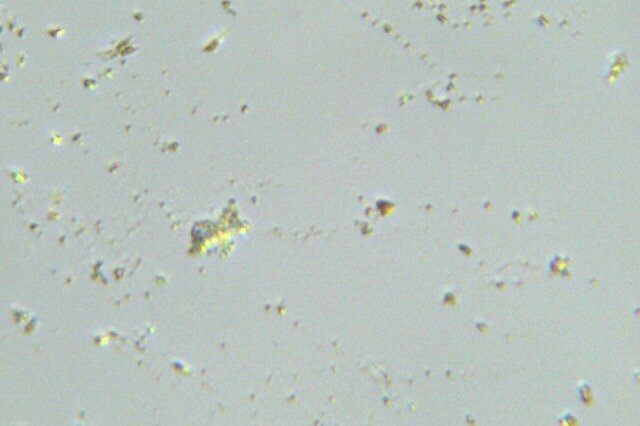
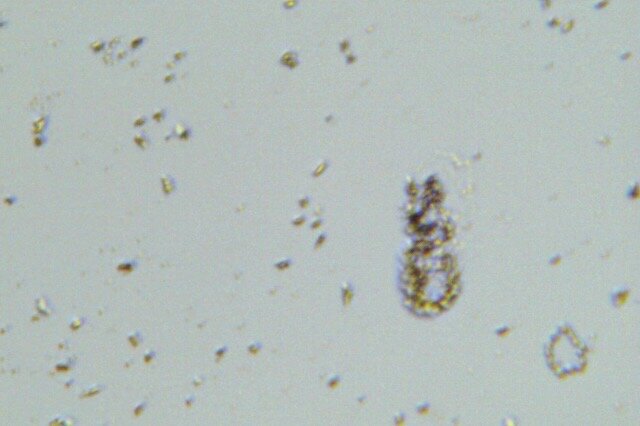
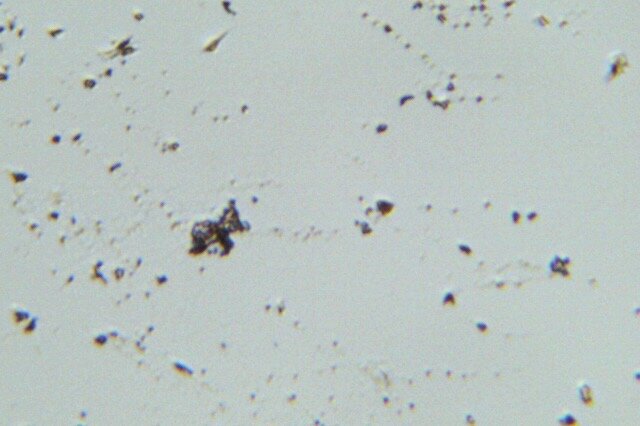
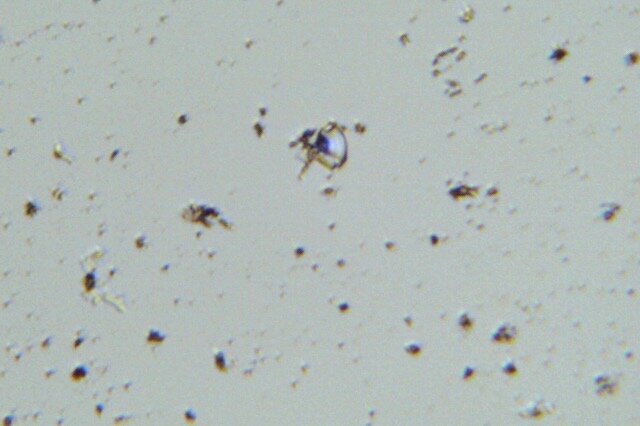
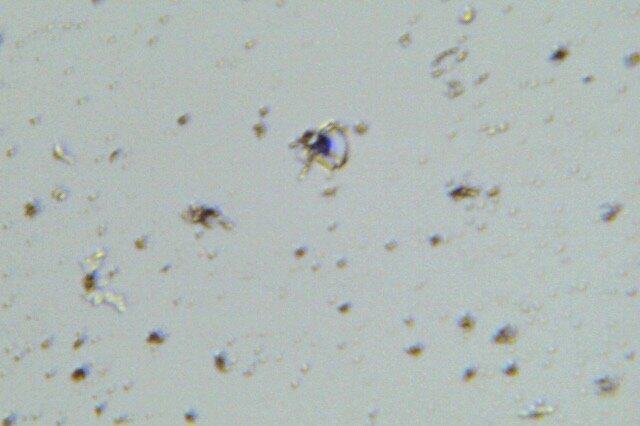

Act III: The New Kingdom
Far from the Golden Empire and the Dark Dungeon of Death, a new kingdom was born. One made of green plants and colorful flowers. It was called the IDM Grow. It brought joy to those who crossed it, but not many stayed to take roots in this new land. There were a few who occupied this pristine land: the first settlers. They were all good natured and kind, but seemed to be young and inexperienced. What they lacked in numbers they made up in vision, to multiply and cultivate the kingdom. To bring life and joy to all who lived in it and all who traveled across it.
Mycelium Update
Research Paper Outline
I found the following topics interesting and related to my thesis project, which focuses on the topic of bioDesign and biotechnology for space exploration. Specifically, food and material applications.
Astronaut Microbiome Research
Microbiome in extreme environments
Bioreactors
I aim to create a tailored research paper that focuses on microbiomes for space exploration and interplanetary environments.
In this paper I will explore the scope of microbiomes in long term space exploration.
Space explorers/ astronauts microbiome and how space travel for long durations in a relatively small confined environments affects them.
-radiation
- zero g
Affect of Mars on microbiome
The microbiome on Mars
- extreme cold
- low g
- radiation
Bioreactors to grow microorganisms for:
-food production
- material production
- convert co2 to oxygen
- waste treatment
- water purification
References: https://www.frontiersin.org/articles/10.3389/fspas.2016.00023/full
https://microbiomejournal.biomedcentral.com/articles/10.1186/s40168-017-0256-8
W2: Companion Species
Andrew and I picked mycelium as one of the companion species to grow and take care of, since we both are interested in researching the material properties and potential applications of it for our thesis projects. However, neither of us had any prior experience growing mycelium, which made this process a fun learning opportunity.
Steps:
We chopped up 3 types of store bought mushrooms
We cut up cardboard pieces and soaked them in boiling water to sterilize (this also provides moisture for mycelium to grow)
We peeled the cardboards into thinner layers
We layered the cardboards with pieces of mushroom in between (like making lasagna)
We poked holes in the lids so the mycelium can breathe
We made a quick DIY incubator for the mycelium with material that we found around IDM, to create a dark and warm environment for it to grow:
An empty box
Foil to line up inside of the box
A fish tank heater to keep the temperature around 70-80 degrees
